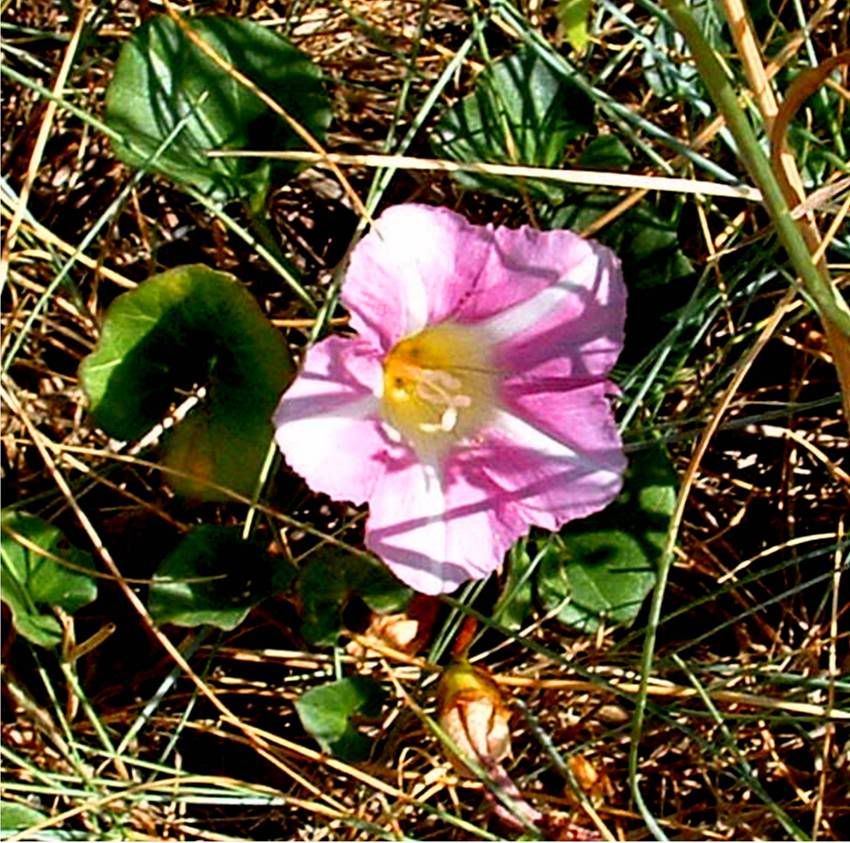Duties concluded, we are free to sight-see! This may take some time, so I recommend you get a cup of coffee (or the beverage of your choice) and settle in for a while.
I decide to have another lie-in; you understand, these are not
late lie-ins, merely to about 9.00 am, when the noise of traffic, trams and people outside drives me out of my bed to the shower! I forego breakfast in the hotel and decide to do the real tourist thing – to find a café and sit outside, watching the world go by whilst sipping on a
café au lait.
I set out to find the cathedral. Of necessity born of joint damage, I move slowly, so it’s a gentle amble, checking out the shops as I go, (and beginning to understand Liz’s fascination for the shoe shops!) and soak in the difference of the place. It reminds me of York, in a way, trendy shops giving way to the more tourist-trap versions as I near the cathedral itself. It rises from the houses much in the way York Minster – or indeed Beverley Minster in my home town – does; there is no clear view of the building, just glimpses of facades through gaps between other buildings. I find a road leading to the North doors, and stop to take it all in.

It seems to be red sandstone – the only time I have seen this before is St Magnus in Orkney – of course I may be wrong, not having a geological hammer with me (and I doubt I would have been allowed to take samples!), and the details in the carving are still very clear, which I wouldn’t expect in something subject to the weathering of centuries. The North Porch (apologies if I get this wrong, but I’m guessing direction!) is fascinating, and I stop at a café, order
petit dejeuner and sit down outside to take in the view.
Croissant, café au lait, et cathedral.
On one side, the Wise and Foolish Virgins look smugly at each other. On the other, the Vices backstab the Virtues. Above the door, the Virgin Mary dies and is buried. Higher still, Kings on horseback ride around the sides of the towers, and above all – gargoyles. Crowding each buttress, each cornice, they hang out halfway to the sky, open mouthed at the antics below.
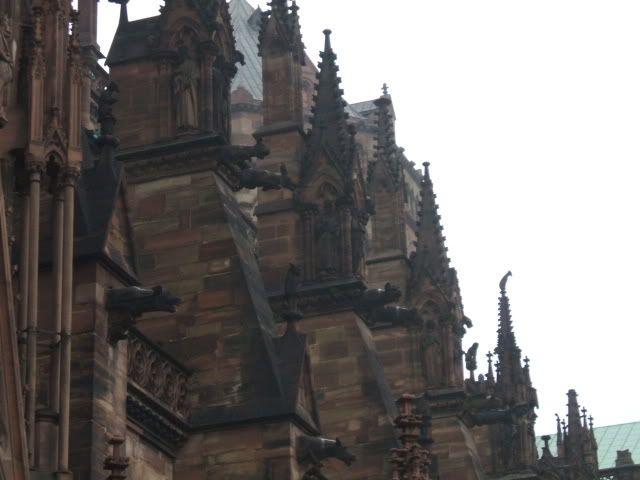
I
love gargoyles! The chief beauty of Gothic architecture, for me, lies in the gargoyles. I wish our modern architecture had room for them, it would be so much more fun!
Off to my left, an old merchant house looks more German than French, reflecting the mixed nature of the Alsace region.

A strange noise attracts my attention. There is a man with a barrel organ to my right, and another group that I can only describe as the local equivalent of a
mariachi band to my left, but another, deeper, more visceral noise underlies it all. Finishing my coffee, I pay the bill and go to find out what’s happening.
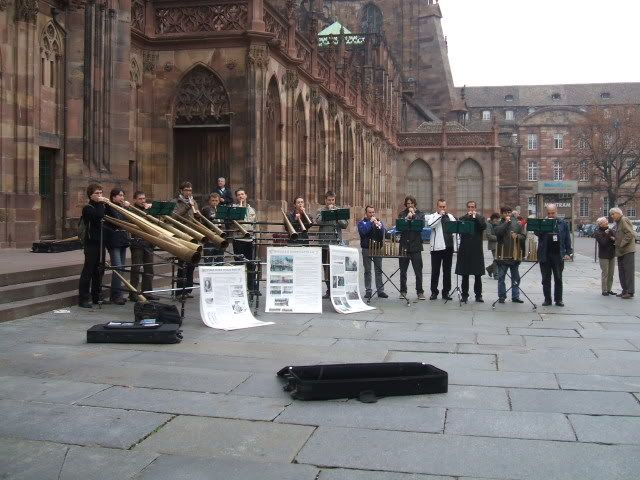
Russian horns! They look more like old brass telescopes, but the sound is wonderful. They play classical music, sounds Russian to me (but what do I know!) and it clashes deliciously, in a way that makes me want to laugh out loud, with the accordion/
mariachi version of ‘Delilah’ that is still playing around the corner.
I wander back to the tourist office to meet up with Liz and Lucy, who are halfway through the walking tour, cleverly guided by mp3 directions. We head for the cathedral to see the astrological clock, only to find that demand means that the doors are closed before the 12.30 pm ‘performance’. So we wait for it to finish (quietly cursing!) on the steps below the outer clock.
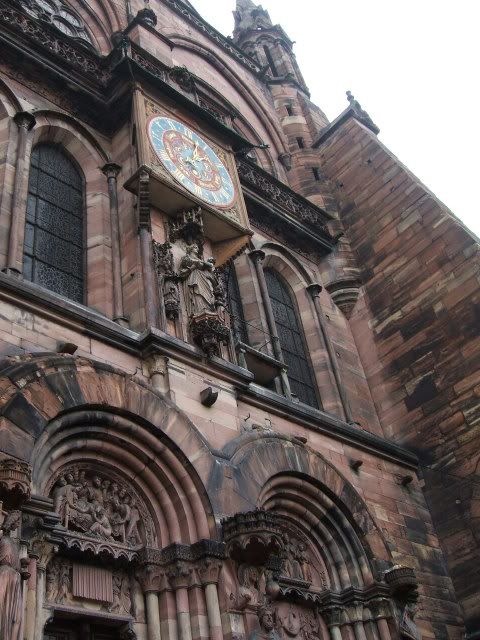
Once the doors open, we make our way inside. The clock is a masterpiece of automata; created in the 1400’s, and repaired and extended in the 18th century, it has some of the oldest moving mechanical figures in Europe. But the first thing that meets the eye as you enter by the (probably) West gate is the Angel column. It represents the Day of Judgement, gospel writers below angels below archangels and holy figures, and it’s quite beautiful.
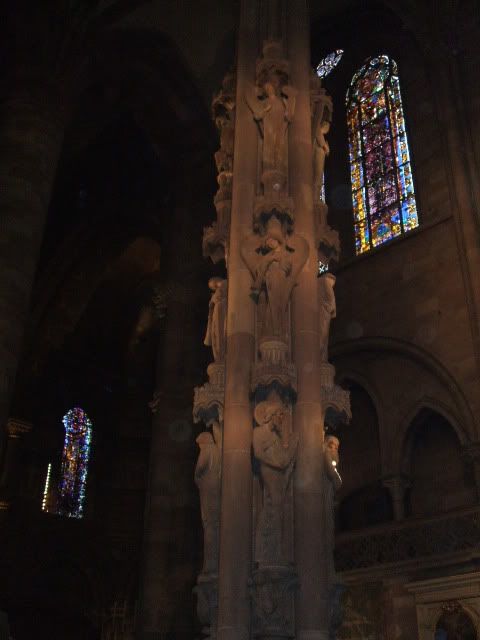
OK, back to the clock. It’s absolutely huge, and I don’t know if the picture gives any idea of how big it is. I apologise for wobbly bits in the picture, as I’ve stuck two together to show you what it looks like. What are we looking at?
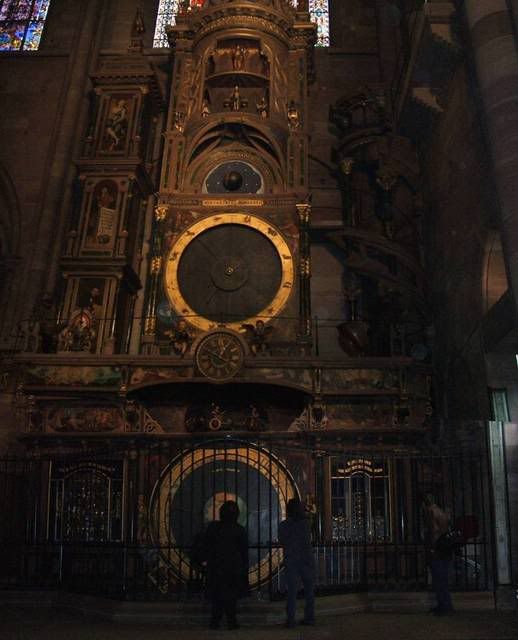 Top left
Top left – a rooster, which crows – apparently represents Peter’s denial. Below this, a lot of mechanism which drives (
bottom left, behind the grille) an ecclesiastical clock – which, I guess, is something that will tell the date of Easter or something of the sort – it goes into epochs and all sorts of things. The pictures are of the muse of astronomy, Urania, Copernicus and…umm. Guilty, don’t remember!
Top right – and below – the stairway that rises for the maintenance man (very narrow steps!)
In the middle: at the top, I think, it’s the figure of Christ and the apostles parade past him each day at noon - hence 12.30 – the clock works on astronomical time rather than official time (remember Leap Years?). Below that figures representing the ages of man parade at intervals – childhood, youth, maturity and old age. Under them, a black and gold globe shows the phases of the moon, and below that, the astrological signs revolve around the heavens. At the foot of these sit two cherubs, one with a bell (which rings the quarter hours) and one with an hourglass (which turns on the – half - hours?). Between them, there is a clockface with two sets of hands, one showing official time, one showing ‘real’. Under these - (I
told you it was huge!) – and this is under the dark shelf at the lower third of the picture – are a series of Roman chariots representing the days of the week – today it’s Luna, in a chariot drawn by stags (how appropriate!).
The big disc below that shows the Earth, with hands that reflect the length of the day at this time of year. I’m guessing that the globe revolves to show the side of the Earth facing the Sun. Behind the man who is inconveniently standing in the middle is an orrery, mapping the heavens.
And one small detail, which I love and which I have failed to represent clearly, is the light coloured band to the right bottom corner. This has the months of the year on it, from top to bottom and back up again (and the appropriate sign of the Zodiac) and in the door to the right of it is a slit, which makes the midday sun shine on the appropriate time of year. I love this clock!!!!
On either side of the big disc at the bottom are the emblems of Night and Day. Day is a chap in Roman armour, who points at the current time. Night, on the other hand, is to be quite frank, a bit of a floozy. I mean, look at that frock…
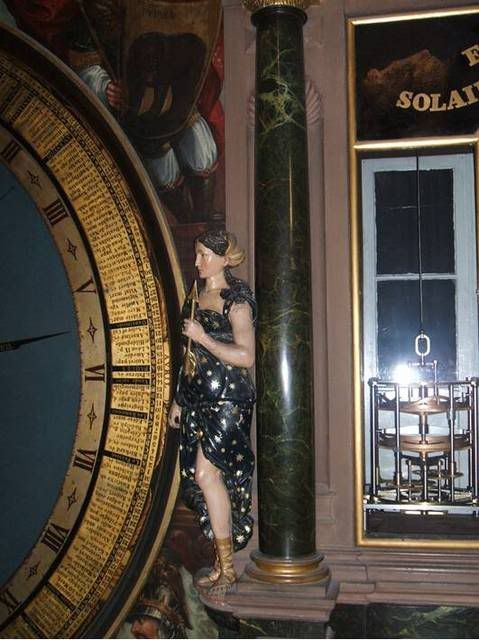
Liz and Lucy head off to finish their tour, and I set out around the cathedral to se what they’ve already seen. It’s gorgeous, and not that huge – it bears comparison with either Minster – and has a number of rather enchanting features such as this -
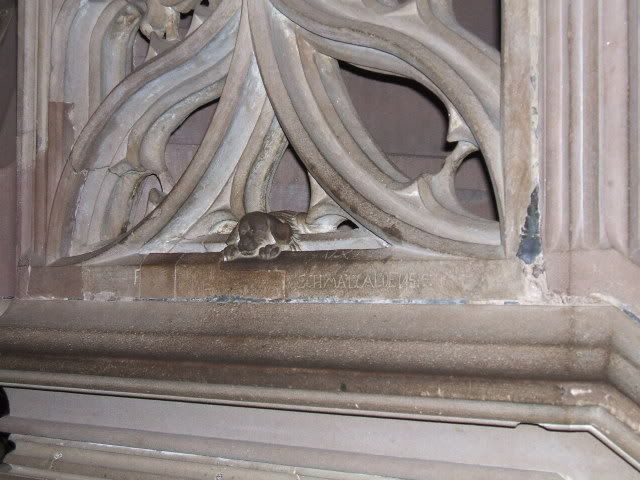
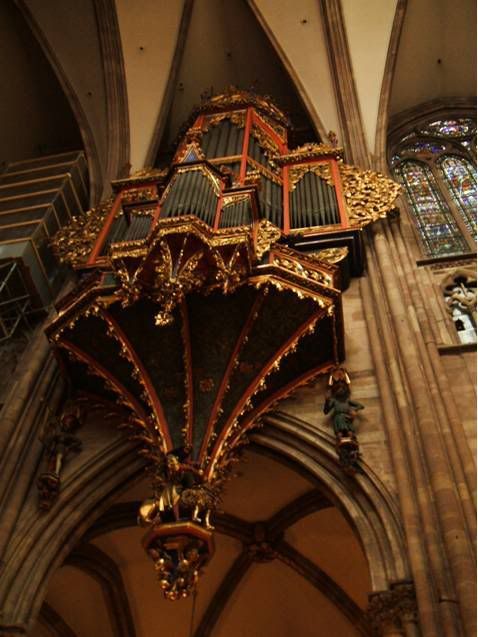
On the left, a representation of the preacher’s dog, put there to keep him company during long hours in the pulpit! And then there’s the organ loft, hung like a swallow’s nest high in the vaulting, (I doubt it still works, but it’s amazing! And think of the organist climbing all that way up there…) After a while, I venture back into the word outside, blinking in the sunshine, and take a trip on the wee tram that runs round the old part of the city. It travels through the more picturesque streets, bucking over the tram lines, squeezing through the narrow lanes of Petit France, crossing and re-crossing the river. It’s a nice way to see the sights.
I met up with the others back at the cathedral, for quick refueling stop consisting of patisserie, and we head down to the river to take in the sights on the boat trip. The day has become warm and sunny, and we opt for the open top boat. For the first part, we cover relatively familiar ground, seeing the old part of the city from the water, traversing a couple of locks, passing the old washing stations and the tanners’ houses, before turning upriver towards the more modern elements of the European Parliament buildings.


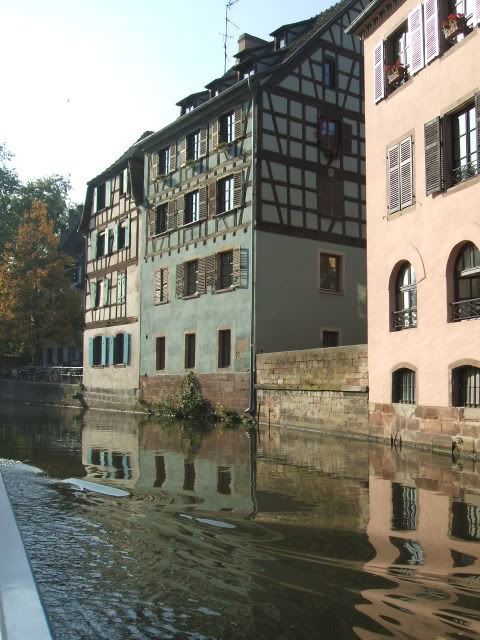

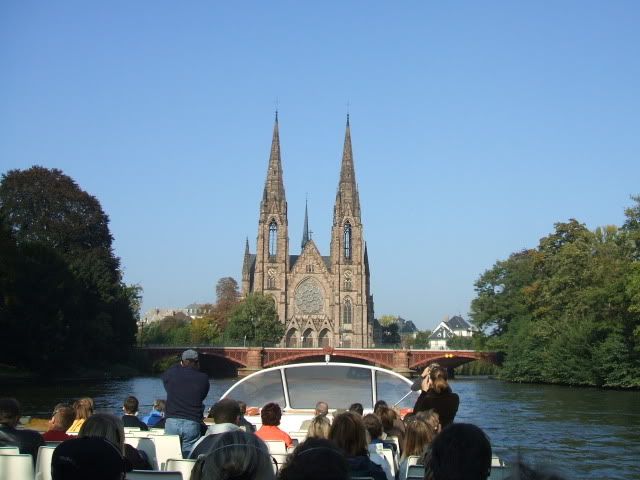
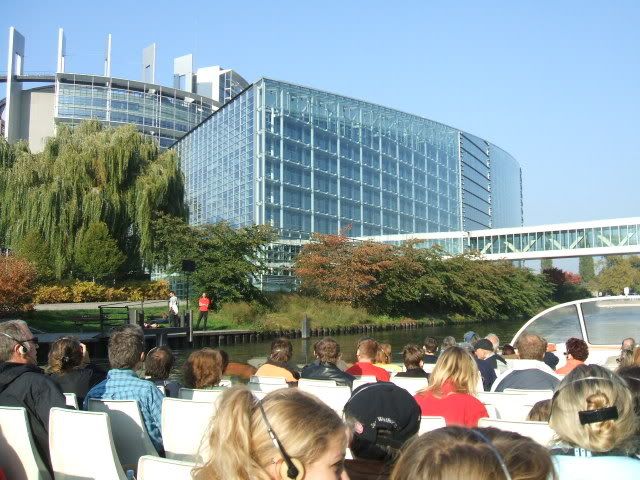
It’s a relaxed and relaxing way to see the sights, (and you can get off on certain trips and see things more closely) and we finally wander back ashore with thoughts of shopping and coffee. Liz heads off shoe-shop-wards, and Lucy and I decide to be a little more leisurely and find yet another café –this time with a more Germanic flavour. But before we split up, I find another gargoyle, this time on the downspouts of the Rohan Palace…
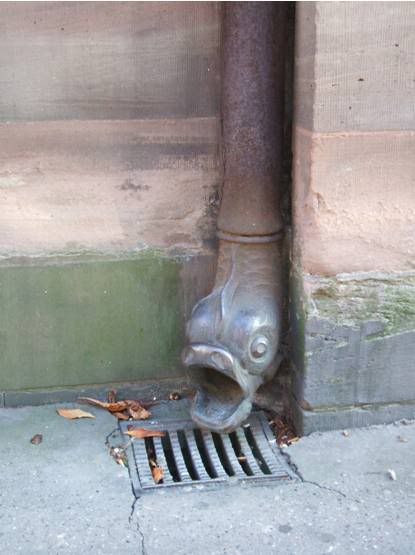
Tomorrow we head back to Scotland, via Orly and Charles de Gaulle, over the cloud covered land, before dropping down through the grey layers to an Aberdeen little different for our absence. Tonight, wandering back towards the hotel, before a final meal at our favorite haunt, we see that we have made
some form of impact on the city. In a plant-pot on one of the main shopping streets, Excalibur waits for the Once and Future King…
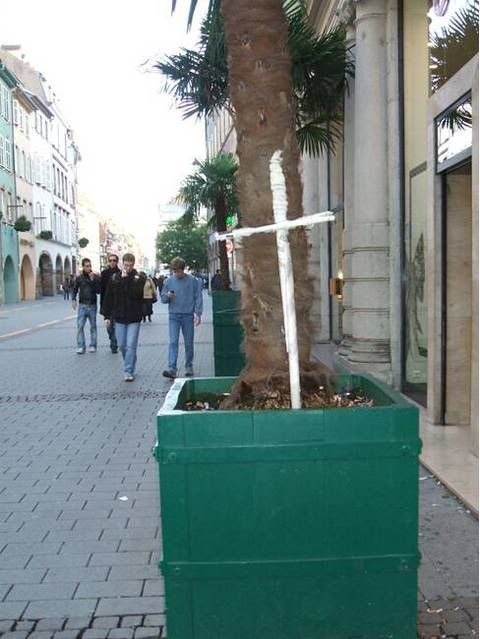
Random memories?
The panic of trying to by a tram ticket and finding the machine broken – and the delight in discovering how to get it to tell you what to do in English! And the tram system itself – regular, efficient, and cheap. And clean!!
The bats swooping over the Music Hall.
Small, silent, smiling children.
The Eiffel Tower, lit up and glittering at night.
Finding words in French that I didn’t know I knew suddenly at the front of my brain.
Sunrise through mist, and the cathedral rising through it, clad in scaffolding that looked like part of the building – a lacework tracery edging the steeples.
Discovering – as if I should have thought different – that kids are very much the same, wherever you are.
A wealth of very charming men!
Sun on the water.
Plane trees, reminding me of the old slogan – plane trees aren’t.
Market stalls, farmers’ market on Friday, antiques market on Saturday, neither of which we had time to see (or spend money in!)
Politeness.
The Eiffel Tower during the day, from the window of the coach between airports.
Nightfall rushing towards us across the clouds.
A crazy idea, that seemed to work!
Home again, how long ago it feels…




















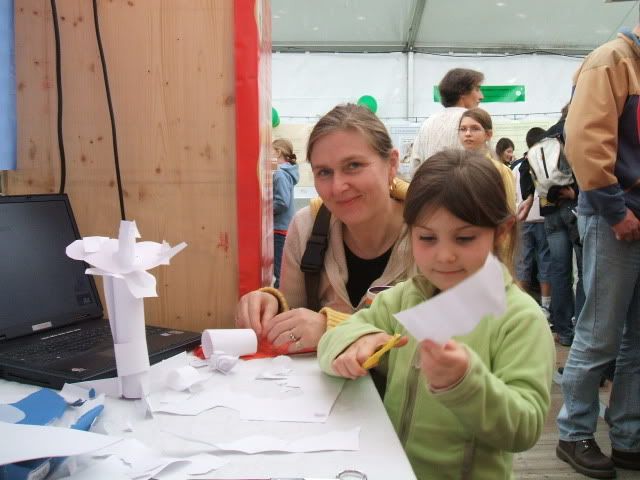







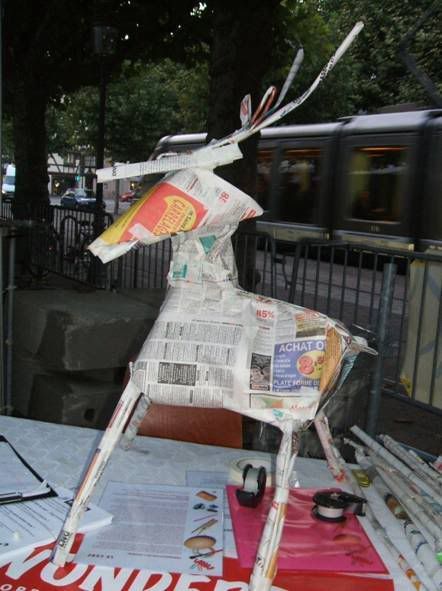










 The road itself is a patchwork of concrete slabs, some inlaid with old railway lines, and odd strips of interlocking blocks which can be dug up and re-laid, at least where there is sufficient land to put them. A single track, with occasional passing places and lay-bys, it connects the isolated lifeboat station and coastguard to the rest of the world. To leave the road surface is to risk grounding, and becoming stuck in deep, soft sand. High banks, covered in bramble, leathery grey-green sea buckthorn and spiny marram grass both protect the roadway and threaten to engulf it. Convolvulus twines through the scrub, turning striped trumpet flowers towards today’s blue sky. It’s not always so welcoming.
The road itself is a patchwork of concrete slabs, some inlaid with old railway lines, and odd strips of interlocking blocks which can be dug up and re-laid, at least where there is sufficient land to put them. A single track, with occasional passing places and lay-bys, it connects the isolated lifeboat station and coastguard to the rest of the world. To leave the road surface is to risk grounding, and becoming stuck in deep, soft sand. High banks, covered in bramble, leathery grey-green sea buckthorn and spiny marram grass both protect the roadway and threaten to engulf it. Convolvulus twines through the scrub, turning striped trumpet flowers towards today’s blue sky. It’s not always so welcoming.